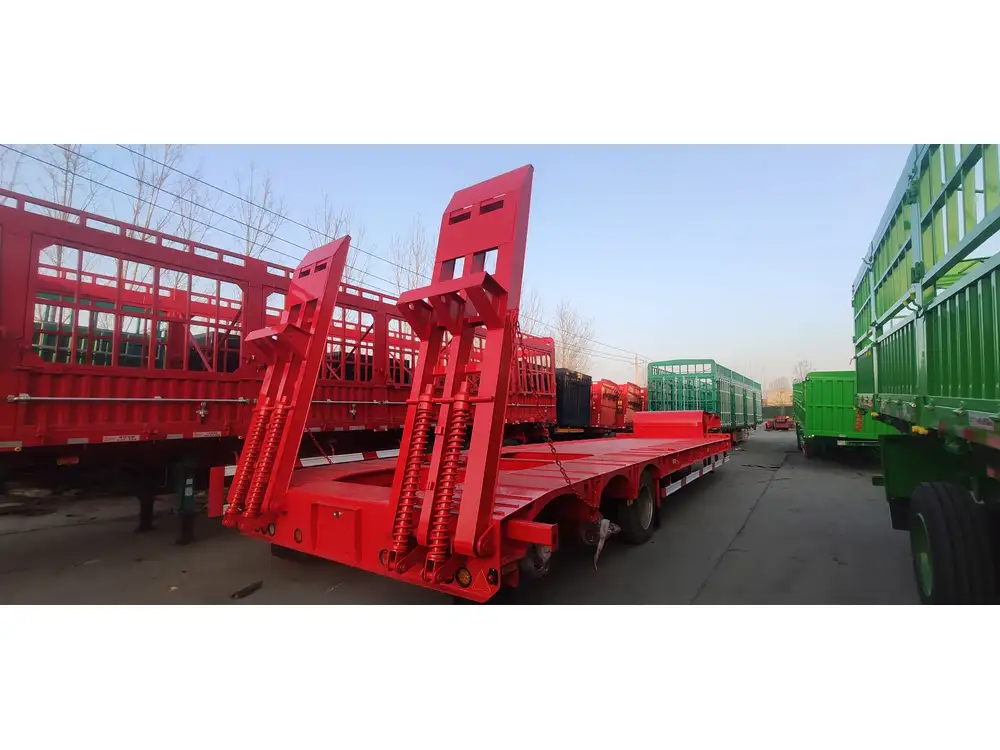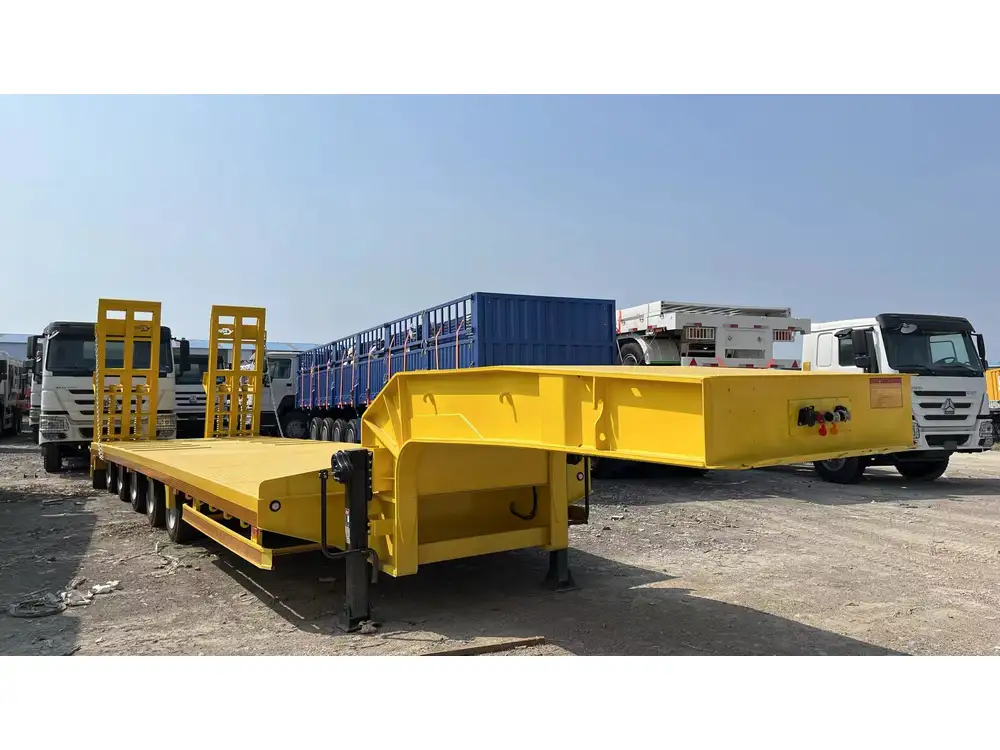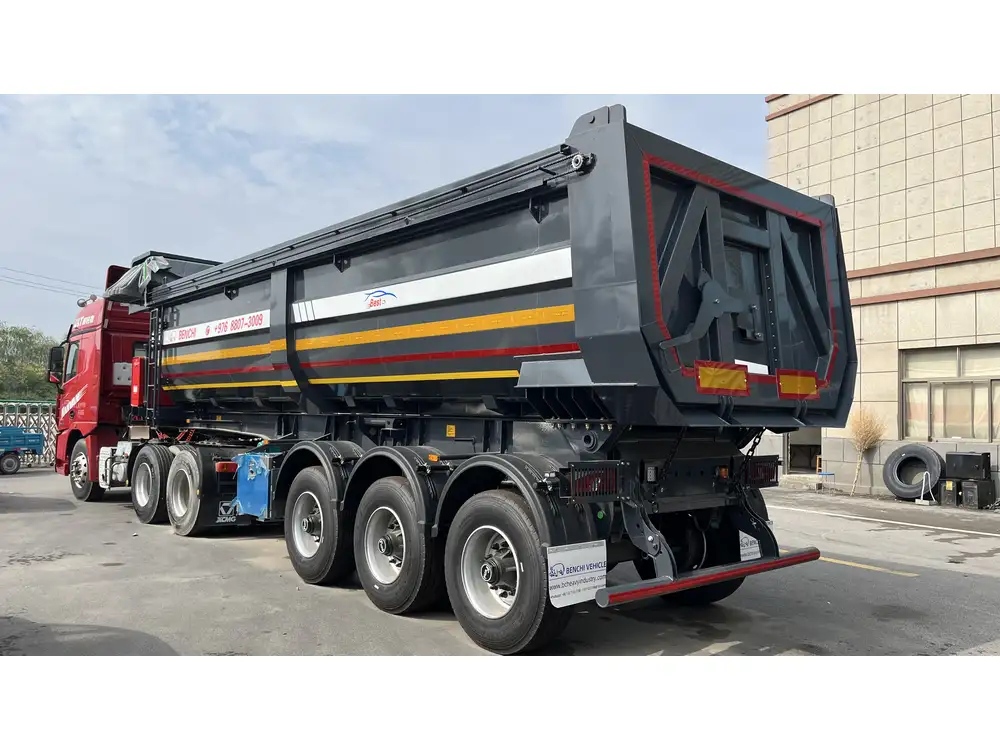Airbag suspension systems have revolutionized the way heavy-duty vehicles operate, providing enhanced ride quality, improved load distribution, and increased cargo safety. Semi-trailers equipped with airbag suspension systems offer exceptional flexibility and adaptability in various loading conditions. However, understanding how to properly adjust these systems is critical for optimal performance and longevity. In this guide, we provide a detailed overview of the process involved in adjusting airbag suspension on a semi-trailer, touching on critical points, techniques, and best practices.
Understanding Airbag Suspension Systems
What is Airbag Suspension?
Airbag suspension utilizes inflated rubber airbags instead of traditional coil or leaf springs to support the weight of the trailer, providing a smoother ride while minimizing road shock. The key operational components include:
- Airbags: Compressed rubber structures that inflate to support the load.
- Compressor: An air pump that inflates the airbags.
- Control Valve: Regulates the airflow into and out of the airbags.
- Height Sensors: Monitor the distance between the chassis and axle to maintain the intended ride height.

Advantages of Airbag Suspension
- Improved Ride Quality: Absorbs road imperfections better than traditional suspensions.
- Load Equalization: Automatically adjusts to varying loads, promoting even weight distribution.
- Reduced Wear on Components: Minimizes stress on the frame, axles, and tires.
- Easier Loading and Unloading: Adjusts to optimal heights for easier access.
The Importance of Proper Suspension Adjustment
Improperly adjusted airbag suspension can lead to various issues, including:
- Unstable Ride: An unbalanced load can lead to swaying or tipping.
- Tire Wear: Misalignment impacts tire longevity and performance.
- Cargo Damage: Poor shock absorption can harm sensitive cargo.
Common Symptoms of Misadjusted Airbag Suspension
- Uneven ride height across the trailer
- Increased bounce or sway during travel
- Noticeable tire wear, especially on the shoulders
- Difficulties during loading and unloading operations

Step-by-Step Guide to Adjust Airbag Suspension
Required Tools and Equipment
Before embarking on the adjustment process, gather the following tools:
| Tool | Purpose |
|---|---|
| Air Pressure Gauge | To measure air pressure in the airbags |
| Air Compressor | To inflate or deflate the airbags, if necessary |
| Wrenches and Sockets | For loosening and tightening suspension components |
| Leveling Tool | To ensure accurate height adjustments |
| Safety Gear | Gloves, goggles, and other appropriate protective equipment |
Step 1: Safety First
Always ensure that the semi-trailer is parked on a level surface, and the parking brake is engaged. Inspect the trailer for any impending issues before proceeding with adjustments.

Step 2: Measure Current Ride Height
Using a leveling tool, measure the height from the ground to a reference point on the trailer frame, typically near the axle. This measurement will serve as the baseline for your adjustments.
Step 3: Check Air Pressure
Use an air pressure gauge to check the current pressure in the airbags. Manufacturers often specify a pressure range (commonly between 55-90 PSI) for optimal functionality. If pressure is outside this range, adjustments will be needed.
Step 4: Adjust Airbag Pressure
If an adjustment is necessary, follow these steps:
Inflate the Airbags:
- Connect the air compressor to the system.
- Gradually increase the pressure to the recommended PSI.
- Continuously monitor pressure readings to avoid over-inflation.
Deflate the Airbags:
- To lower pressure, locate the air release valve.
- Open the valve slowly to allow air to escape.
- Keep an eye on the air pressure gauge to ensure you reach the desired level.

Step 5: Leveling the Trailer
Once the proper air pressure is achieved, remeasure the ride height from step 2. If the trailer is still unlevel, further adjustments are necessary:
- Add air to the side that is lower to bring it up to the correct height.
- Alternatively, you may need to reduce air pressure if the side is too high.
Step 6: Test for Stability
After adjustments, perform a test drive to evaluate stability and ride quality. Pay attention to:
- Any sign of sway or instability.
- Changes in tire grip and behavior, especially when turning.
- The overall feel of handling during the drive.
Step 7: Recheck Adjustments
Post-test, check the ride height and air pressure again to confirm consistency. This step ensures that the adjustments have held.

Tips for Maintenance and Ongoing Adjustments
Regular Inspections
Frequent inspections of the airbag suspension system are crucial. Key areas to focus on include:
- Airbags: Look for signs of wear, tears, or punctures.
- Connections and Fittings: Ensure all connections are tight and leak-free.
- Compressor Operation: Confirm the compressor works efficiently; replace if necessary.
Keeping Records
Maintain a log of adjustments, inspections, and repairs. Detailed records help in tracking system performance and anticipating future maintenance.

Professional Assistance
Consider consulting or hiring a professional technician for complex adjustments or problems. Their expertise can help in resolving issues that may be outside standard maintenance practices.
Seasonal Adjustments
Adjust your airbag suspension based on seasonal load changes. For instance, if winter goods often weigh more, tailor the air pressure accordingly.
Conclusion
Adjusting airbag suspension on a semi-trailer involves a structured approach to ensure optimal performance and vehicle stability. Proper adjustment not only extends the lifespan of the trailer but also significantly enhances safety and driving comfort. While the steps outlined here can guide you through the adjustment process, regular maintenance and vigilance are key to long-term functionality. By adhering to these practices and addressing any irregularities promptly, you can ensure that your semi-trailer provides a smooth, reliable ride, supporting your transportation needs effectively.
Embracing the nuance of airbag suspension adjustments allows for an advanced understanding of one of the truck industry’s critical systems. Use this guide not just as a one-time reference but as a resource for ongoing learning and development in managing your fleet efficiently. Whether you operate a single trailer or a full fleet, mastery of airbag suspension adjustments is a vital aspect of your operational success.



